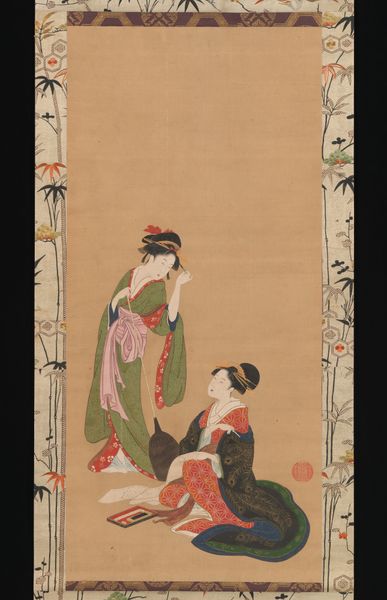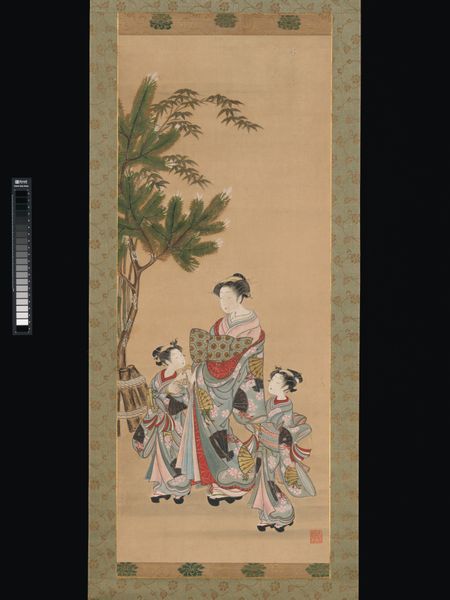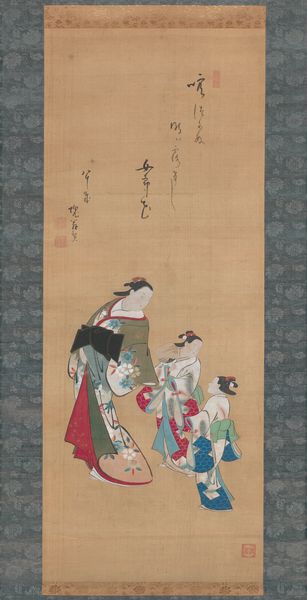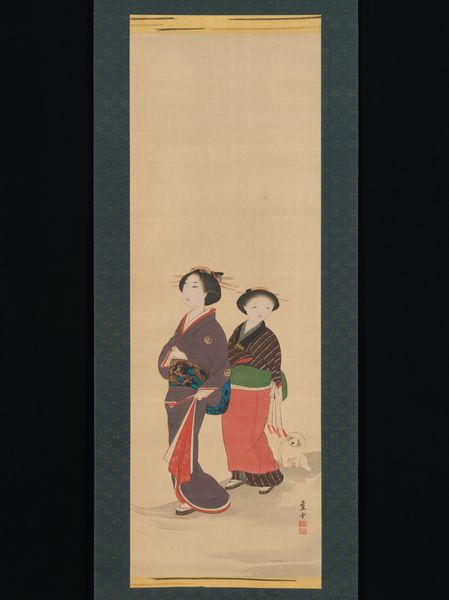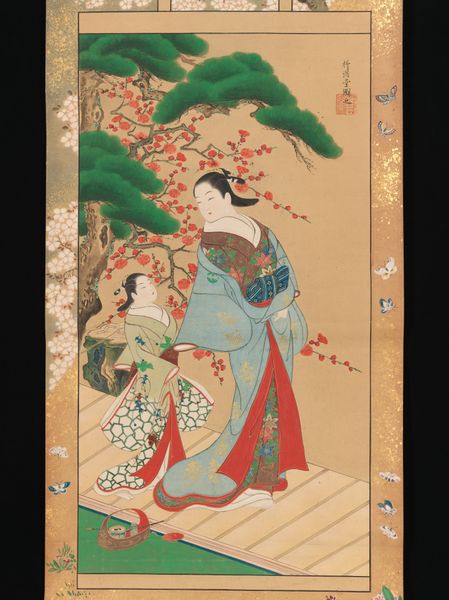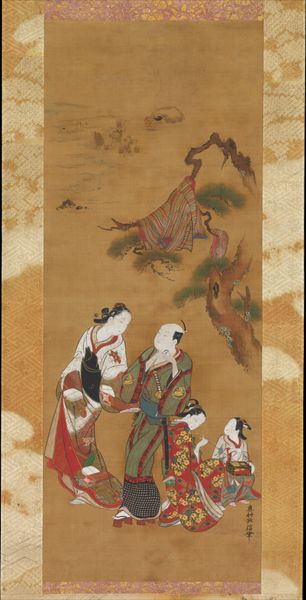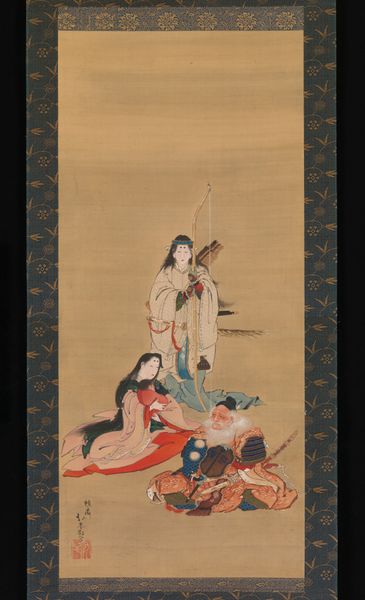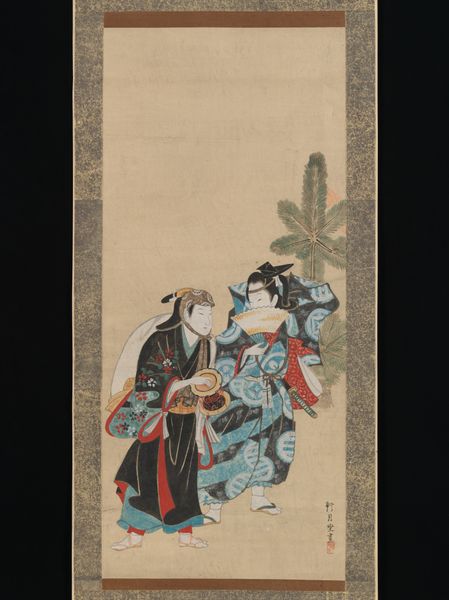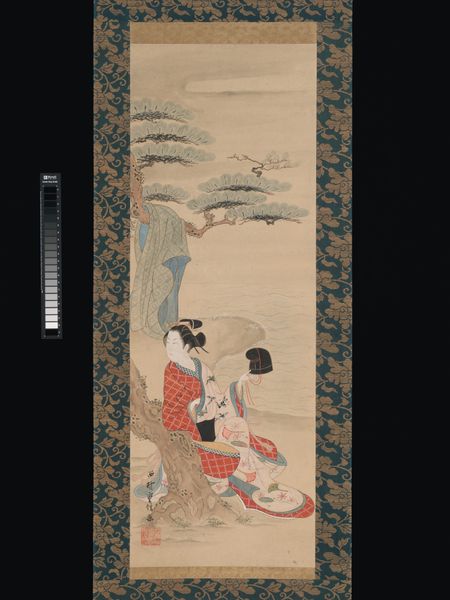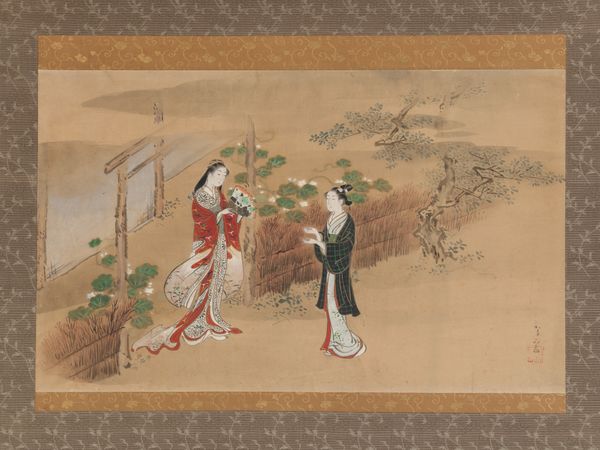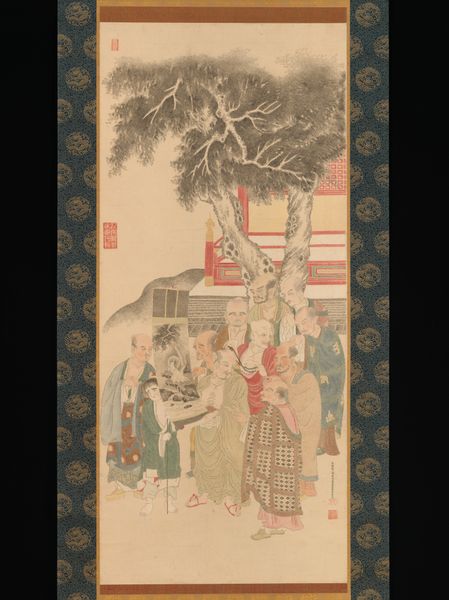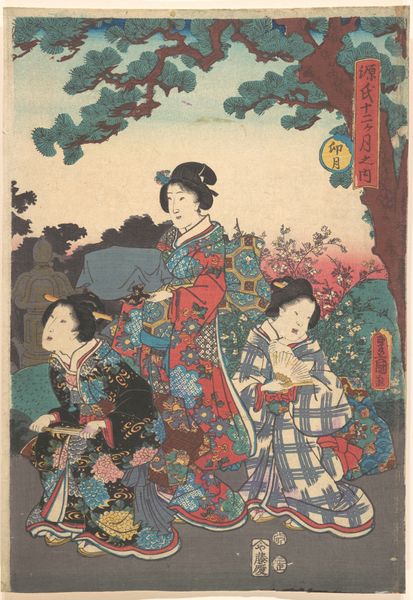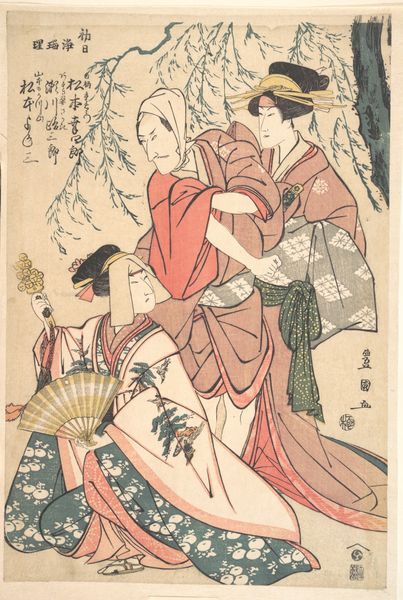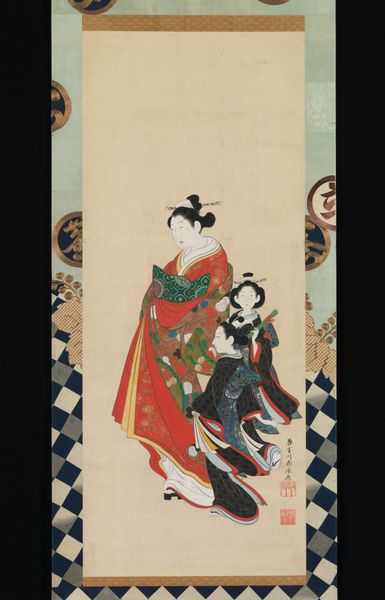
Seven Beauties of the Bamboo Grove 1900 - 1918
0:00
0:00
painting, watercolor
#
muted colour palette
#
painting
#
asian-art
#
landscape
#
figuration
#
watercolor
#
naive art
#
24_meiji-period-1868-1912
#
watercolour illustration
#
genre-painting
#
watercolor
Dimensions: Image: 64 9/16 × 33 7/8 in. (164 × 86 cm)
Copyright: Public Domain
Watanabe Seitei painted "Seven Beauties of the Bamboo Grove" with ink and color on silk, during the Meiji period in Japan. This print exemplifies the *bijin-ga* genre or pictures of beautiful women. These paintings were often less about the individual and more about representing feminine ideals. Here, the women are set against a backdrop of bamboo. Bamboo groves themselves have complex cultural associations in Japan, as sites of leisure, pleasure, and even danger. Note how these beauties are pictured in a group and arranged to display their elegant robes. During the Meiji period, the role of women was hotly debated in Japan. On the one hand, there was pressure to modernize and Westernize, which included new concepts of female education and employment. On the other hand, conservative forces sought to maintain traditional roles for women. A print like this reflects the tensions of the period. To understand it better, we can research the history of Japanese printmaking, the cultural significance of bamboo, and the changing roles of women in Meiji-era Japan. By exploring these resources, we gain a richer understanding of the artwork and the social context that shaped its creation.
Comments
No comments
Be the first to comment and join the conversation on the ultimate creative platform.
